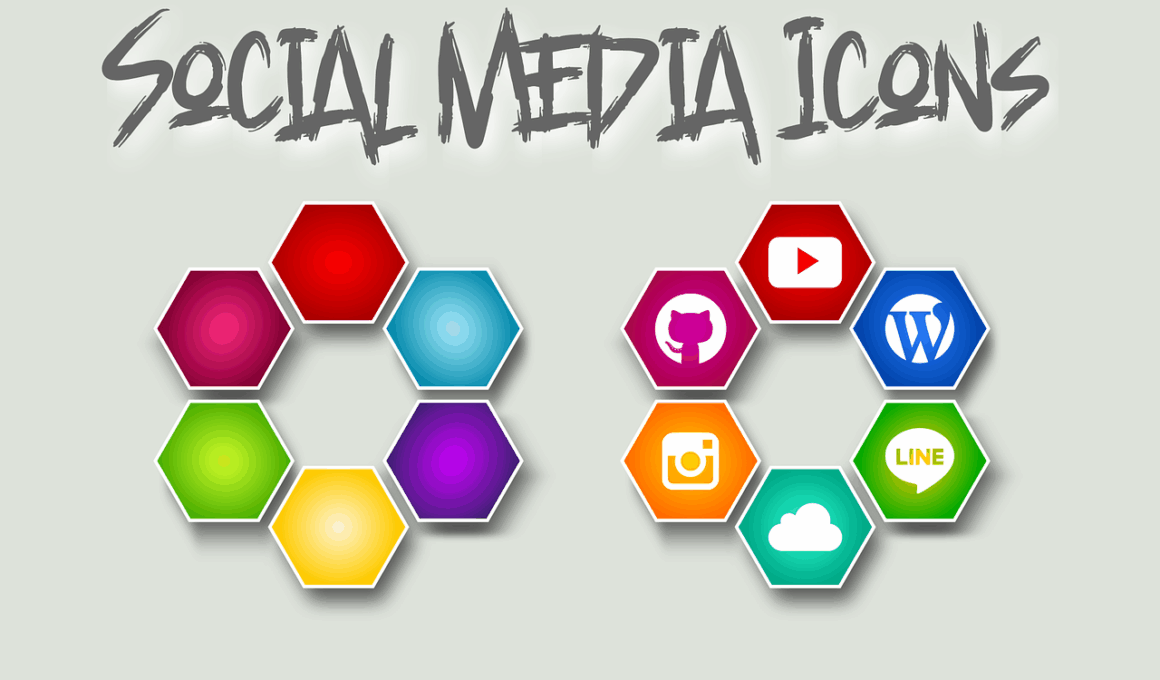Top Accessibility Resource Libraries for Social Media Professionals
In today’s digital world, social media accessibility is crucial for making content available to everyone. Social media professionals need to understand how to make their platforms inclusive for users with disabilities. This is where accessibility resource libraries come into play; they provide essential tools, knowledge, and practices to ensure social media is accessible. Libraries usually compile guidelines, articles, and templates that address various aspects of accessibility. Utilizing these resources, social media managers and content creators can develop content that meets the needs of diverse audiences. Additionally, implementing accessibility standards will enhance user experience and increase engagement. Each resource library caters to various social media platforms, offering tailored advice, best practices, and compliance information. Some prominent libraries include the Web Content Accessibility Guidelines (WCAG), and the Accessible Rich Internet Applications (WAI-ARIA) specifications. As social media evolves, these resources are continuously updated to include the latest trends and technologies. Accessibility should no longer be an afterthought; it is imperative for creating engaging, fair, and effective online communities that everyone can enjoy. Effective usage of these libraries can lead to better social media handling and inclusive campaigns.
Accessibility is an ongoing concern for many social media platforms, especially as they evolve. One significant resource is the Social Media Accessibility Toolkit, which provides actionable checklists and insights that can be integrated into various content strategies. Social media professionals can utilize infographics, videos, and articles included in this toolkit to enhance their skills. Social Networking platforms like Facebook and Twitter offer their own resources aimed at helping users understand the best accessibility practices. These resources can assist content creators in aligning their posts with the best accessibility standards. Moreover, advocacy groups contribute greatly to this effort, creating libraries that feature educational resources and community guidance. For instance, the American Association of People with Disabilities (AAPD) offers a comprehensive array of tools designed specifically for those in the digital media domain. By accessing these organized libraries, professionals can find solutions to common accessibility challenges. Furthermore, these libraries often include success stories and case studies to inspire change and implement solutions effectively. Awareness and training through these resources can significantly improve overall content accessibility.
Essential Accessibility Resource Libraries
For social media specialists seeking credible resources, the National Center on Disability and Access to Education (NCDAE) provides rich information relevant to social media accessibility. This platform emphasizes the importance of using assistive technologies, which can significantly enhance users’ online experiences. By outlining key practices and approaches, NCDAE’s library helps professionals stay competitive in creating accessible content. Moreover, it addresses the legal standards for accessibility, ensuring compliance with various regulations, like the Americans with Disabilities Act (ADA). Another invaluable resource is the Accessible Social Media initiative, which offers a collection of articles and recommendations on creating accessible posts. Specialists can access tools focused on different media forms, such as images and videos, to ensure inclusivity across all platforms. Furthermore, they provide checklists that outline critical accessibility features, allowing professionals to evaluate their current social media content. Continuous learning through these essential libraries ultimately leads to better understanding and execution of proven accessibility strategies. Thus, integrating these insights into everyday practice can create transformative improvements in social media’s inclusivity and usability.
In addition to libraries provided by organizations, many universities also offer excellent resources focused on social media accessibility. Academic institutions often maintain databases rich with research papers, case studies, and articles that provide in-depth knowledge of contemporary issues surrounding accessibility. These resources not only focus on the practicality of accessibility in the digital realm, but they also analyze theoretical underpinnings. Moreover, such institutions regularly conduct workshops and seminars aimed at social media professionals, promoting accessibility training and best practices. These academic libraries also often collaborate with industry leaders to ensure that updates and resources are relevant to current trends. Furthermore, specialized courses on social media accessibility are increasingly offered, and materials are available online for free or at low costs. Social media experts can greatly benefit from these educational resources to improve their understanding of disabilities and how they relate to digital accessibility. Gaining proficiency in accessibility will positively impact both the reach and user experience of social media campaigns, ultimately boosting brand loyalty and audience engagement. Empowering individuals and organizations to commit to accessibility is essential in crafting effective social media strategies.
Tools for Implementing Accessibility
Various online platforms provide a plethora of tools focused on accessibility evaluation and design. Websites like WAVE and axe offer services that help content creators analyze and enhance the accessibility of their social media content. These platforms generate reports that identify common accessibility issues and provide suggestions for improvement. By taking advantage of such analysis tools, social media professionals can identify content that may inadvertently exclude potential users. The findings help guide adjustments, making posts more accessible. Additionally, tools like the Screen Reader Simulator allow professionals to experience their content from the perspective of users relying on assistive technology. Further, browser extensions can help highlight accessibility issues as users navigate platforms. On top of that, there are dedicated plugins for popular content management systems that address various aspects of accessibility, including font optimization, image descriptions, and navigation compatibility. Constant engagement with these tools will provide a better understanding of best practices and compliance requirements. As digital landscapes shift, the need to remain updated with tools will ensure that social media maintains robust accessibility standards.
For comprehensive knowledge, it is essential to engage with blogs, webinars, and online courses focusing specifically on social media accessibility. Many industry experts generously share insights through platforms like Medium or their personal websites, discussing topics ranging from accessibility laws to practical implementation tactics. Participating in live webinars with interactive Q&A segments enhances understanding by allowing professionals to interact directly with specialists in the field. Moreover, various online courses on platforms such as Coursera, Udemy, and LinkedIn Learning focus on accessibility and provide certification upon completion. Aligning professional development with industry needs can lead to significant improvement. Not only does this equip social media specialists with the latest trends, but it also fosters community engagement around inclusivity. Some platforms even curate specific content regarding disabled consumers, emphasizing the importance of creating materials that cater to their needs. Establishing connections with peer networks focused on accessibility can further expand professional insight. As more professionals invest time into these resources, the overall industry standards will improve and benefit all members of the digital community.
Best Practices for Accessibility
As resources for accessibility continue to expand, so do the best practices. The key to effective social media accessibility is embedding it into the content creation process from the beginning. This involves considering elements like alternative text for visual media, proper contrast ratios, and captions for videos to make content comprehensible for all users. Ensuring easy navigation requires attention to keyboard shortcuts and screen reader compatibility, as many users rely on them. Furthermore, incorporating feedback from users with disabilities can significantly enhance content accessibility. Conducting usability testing with diverse audiences helps ensure that posted content meets everyone’s needs. Lastly, maintaining documentation of all accessibility practices is crucial in measuring progress and improving future endeavors. Awareness of how updates and improvements are perceived can guide future approaches. Advocating for accessible social media and sharing findings with other professionals can foster a culture of inclusivity within the industry. As these accessibility practices continue to evolve, embracing them can lead to more engaging and fulfilling social media experiences for everyone, thus uniting various communities through shared content.
In conclusion, resource libraries play a fundamental role in transforming social media into a more accessible platform for diverse audiences. By aggregating best practices, guidelines, and supporting documentation, these libraries create a bridge between social media professionals and their users. Accessibility should no longer be viewed as a challenge but rather as a critical opportunity to enhance user experience and engagement. As social media platforms continue to rise in prominence, professionals must prioritize accessibility in their practices. Libraries like the ones mentioned throughout this article provide useful tips to navigate various challenges that accompany content creation. The commitment to making social media accessible can lead to a ripple effect, inspiring others in the industry to follow suit. Furthermore, ongoing education around accessibility not only improves individual content but enhances the collective digital landscape. As more professionals become aware and educated, the goal of inclusivity becomes more attainable. Embracing these ideas contributes significantly to creating a space where everyone can participate freely. Let’s encourage each other to utilize these resources, focus on continuous improvement, and keep the dialogue about accessibility alive.


